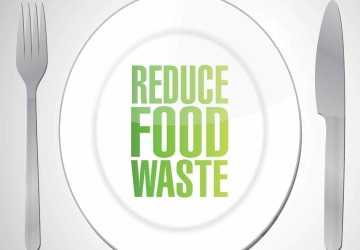tourism
These days more and more people are looking for ways to live a greener, more eco-friendly lifestyle. And what is a better place than a kitchen to get started with it? With some simple changes, you can easily create an earth-conscious kitchen.
In this article, we’ll share 5 straightforward tips for cooking in an environmentally sustainable way. Implementing even a couple of these eco-kitchen ideas will help protect the planet while also saving you money.
Let’s get started!
Why Create a Sustainable Kitchen?
Before diving into the specific tips, let’s look at why a sustainable kitchen matters:
● Reduces energy and water consumption from appliances, sinks, etc. This saves precious resources and money on utility bills.
● Minimizes plastic waste and food scraps that end up in landfills emitting greenhouse gasses.
● Supports local farms through purchasing seasonal produce direct from the source.
● Saves money by cooking at home, buying in bulk, and reducing food waste.
● Teaches children positive environmental values by leading through example.
Every small change to cook more sustainably makes a difference. Now let’s look at impactful ways to upgrade your eco-kitchen.
1. Choose Energy Efficient Appliances

When buying new appliances, choose energy efficient models. This includes refrigerators, dishwashers, and ovens. Although they may cost more initially, they can quickly pay for themselves through energy savings.
Look for the Energy Star label that indicates appliances meet EPA standards for efficiency. Smart features like sensors and timers further reduce energy demands.
Upgrading just one major appliance to an efficient model can save over $100 yearly on utility bills!
2. Use Washable Dishware and Cloth Napkins
To reduce waste, swap disposable items with reusable versions. Use cloth napkins and dinner towels in place of paper products. Choose washable plates, cups, mugs and cutlery over disposable ones.
Pack waste-free lunches and snacks in reusable containers, bags and bottles. Carry a travel mug for your daily coffee rather than disposable cups.
Washable items cut down on trash output and plastic pollution. With a little extra washing, it’s an easy eco-upgrade.
3. Compost Food Scraps
About 30% of household waste is composed of food scraps and yard trimmings that could be composted instead of trashed. Diverting organics from landfills has a huge environmental impact.
Composting turns food waste into nutrient-rich fertilizer to grow more food, completing the cycle. Many curbside pickup services make composting easy. Or create a backyard compost bin.
Bonus: Composting also reduces climate change emissions and landfill methane. It’s a simple way to reduce waste.
4. Cook At Home More Often
Eating home cooked meals is one of the greenest dining habits. It reduces takeout packaging waste and emissions from food delivery and eating out.
Planning weekly meals and cooking at home saves money too. Extra portions can be repurposed into lunches or quick meals later in the week, further cutting waste.
Batch cook staples like whole grains and beans to use in multiple recipes. When dining out, bring reusable containers for leftovers.
5. Purchase Local and Seasonal Foods

Support nearby farms and producers by shopping at farmers markets, joining a CSA, or purchasing locally sourced grocery items. This reduces emissions from long-distance food transport.
Choosing in-season produce also minimizes energy used in storage and shipping. Grow some of your own food too! Shop weekly menus around what’s fresh and available.
Going local shrinks your food’s environmental impact and provides delicious seasonal produce. It’s a tasty way to go green.
Build an Eco-Friendly Kitchen
With some easy upgrades like efficient appliances, reusables over disposables, composting, cooking at home, and buying local, you can quickly establish an eco-conscious kitchen.
Every sustainable choice makes a difference for the planet. What tips will you implement first to create a greener cooking space? Before you know it, these new habits will become second nature. Here’s to sustainable cooking!







